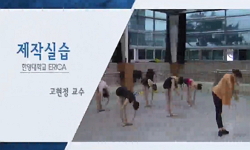Jun Ho Kim, Eun Sun Jung, Chul-Hyun Kim, Hyeon Youn and Hwa Rye Kim. Genetic associations of body composition, flexibilityand injury risk with ACE, ACTN3and COL5A1polymorphisms in Korean ballerinas. JENB., Vol. 18, No. 2, pp.205-214, 2014[Purpose] The...
http://chineseinput.net/에서 pinyin(병음)방식으로 중국어를 변환할 수 있습니다.
변환된 중국어를 복사하여 사용하시면 됩니다.
- 中文 을 입력하시려면 zhongwen을 입력하시고 space를누르시면됩니다.
- 北京 을 입력하시려면 beijing을 입력하시고 space를 누르시면 됩니다.


Genetic associations of body composition, flexibility and injury risk with ACE, ACTN3and COL5A1polymorphisms in Korean ballerinas = Genetic associations of body composition, flexibility and injury risk with ACE, ACTN3and COL5A1polymorphisms in Korean ballerinas
한글로보기https://www.riss.kr/link?id=A100053529
- 저자
- 발행기관
- 학술지명
- 권호사항
-
발행연도
2014
-
작성언어
-
-
주제어
ballet ; flexibility ; body composition ; injury risk ; ACE ; ACTN3 ; COL5A1
-
KDC
500
-
등재정보
KCI등재,SCOPUS
-
자료형태
학술저널
- 발행기관 URL
-
수록면
205-214(10쪽)
- 제공처
-
0
상세조회 -
0
다운로드
부가정보
다국어 초록 (Multilingual Abstract)
Jun Ho Kim, Eun Sun Jung, Chul-Hyun Kim, Hyeon Youn and Hwa Rye Kim. Genetic associations of body composition, flexibilityand injury risk with ACE, ACTN3and COL5A1polymorphisms in Korean ballerinas. JENB., Vol. 18, No. 2, pp.205-214, 2014[Purpose] The purpose of this study was to exam the association of body composition, flexibility, and injury risk to genetic polymorphismsincluding ACEID, ACTN3RX, and COL5A1polymorphisms in ballet dancers in Korea. [Methods]For the purpose of this study,elite ballerinas (n = 97) and normal female adults (n = 203) aged 18 to 39 were recruited and these participants were tested forbody weight, height, body fat, fat free mass, flexibility, injury risks on the joints and gene polymorphisms (ACE, ACTN3, COL5A1polymorphism). [Results]As results, the ACEDD genotype in ballerinas was associated with higher body fat and percentageof body fat than the ACEII and ID genotypes (p< 0.05). In the study on the ACTN3polymorphism and ballerinas, the XXgenotype in ballerinas had lower body weight and lower fat-free mass than the RR and RX genotype (p < 0.005). Also, the meansof sit and reach test for flexibility was lower in the ACTN3XX genotype of ballerinas than the RR and RX genotype of ballerinas(p< 0.05). Among the sports injuries, the ankle injury of the XX-genotyped ballerinas was in significantly more prevalence thanthe RR and XX-genotyped ballerinas (p< 0.05). According to the odd ratio analysis, XX-genotyped ballerinas have the injuryrisk on the ankle about 4.7 (95% CI: 1.6~13.4, p< 0.05) times more than the RR and RX-genotyped ballerinas. Meanwhile, theCOL5A1polymorphism in ballerinas has no association with any factors including flexibility and injury risks. [Conclusion]Inconclusion, ACEpolymorphism and ACTN3polymorphism were associated with ballerinas` performance capacity; COL5A1wasnot associated with any factors of performance of Ballerinas. The results suggested that the ACEDD genotype is associated withhigh body fat, the ACTN3XX genotype is associated with low fat-free mass, low flexibility, and higher risk of ankle-joint injury. [Keyword]ballet, flexibility, body composition, injury risk, ACE, ACTN3, COL5A1
동일학술지(권/호) 다른 논문
-
- 한국운동영양학회
- ( Jong Hoon Park )
- 2014
- KCI등재,SCOPUS
-
Silkworm pupae powder ingestion increases fat metabolism in swim-trained rats
- 한국운동영양학회
- ( Sung Pil Ryu )
- 2014
- KCI등재,SCOPUS
-
- 한국운동영양학회
- ( Sang Min Hong )
- 2014
- KCI등재,SCOPUS
-
- 한국운동영양학회
- ( Hyun Seok Jee )
- 2014
- KCI등재,SCOPUS




 KISS
KISS






